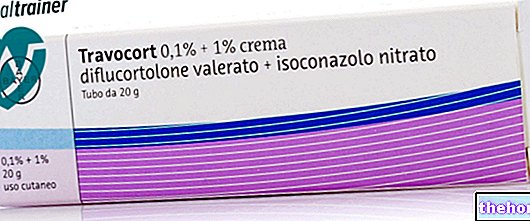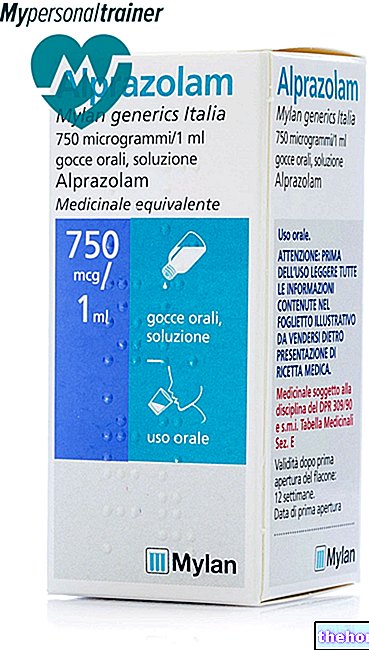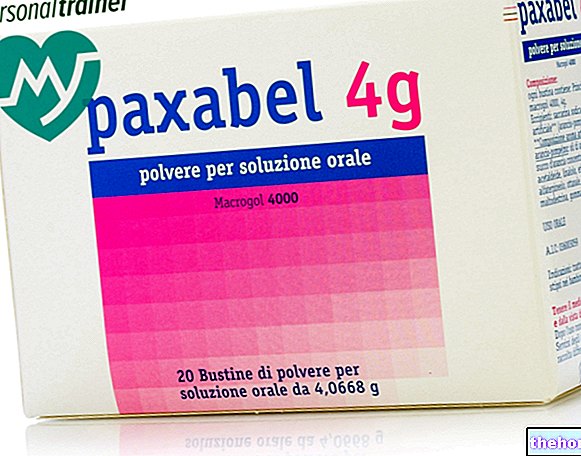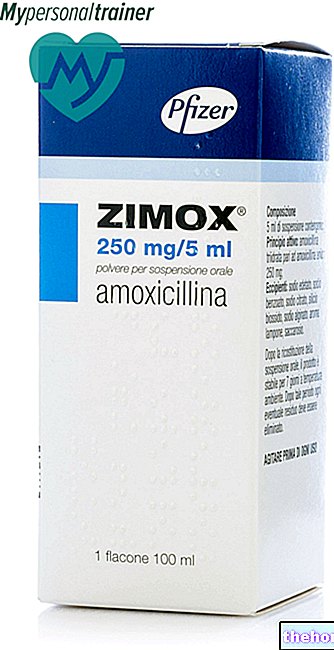Active ingredients: Latanoprost
Latanoprost Aurobindo 50 micrograms / ml eye drops, solution
Why is Latanoprost used - Generic drug? What is it for?
Latanoprost Aurobindo is an eye drop used in patients with a condition known as open angle glaucoma which causes increased pressure in the eye. The active substance in Latanoprost Aurobindo belongs to a group of medicines known as prostaglandins. Latanoprost Aurobindo is a lowering medicine. pressure inside the eye by increasing the natural flow of fluids from the inside of the eye to the bloodstream.
Latanoprost Aurobindo is also used in the treatment of elevated intraocular pressure and glaucoma in children of all ages and infants.
Latanoprost Aurobindo can be used in adult men and women (including the elderly) and in children from birth to 18 years. The use of Latanoprost Aurobindo in premature infants (less than 36 weeks of gestational age) has not been investigated.
Contraindications When Latanoprost should not be used - Generic drug
Do not use Latanoprost Aurobindo:
- if you are allergic to latanoprost to any of the other ingredients of this medicine (listed in section 6).
Precautions for use What you need to know before taking Latanoprost - Generic drug
Talk to your doctor or pharmacist before using Latanoprost Aurobindo:
- if you or your child have severe asthma or your asthma is not well controlled.
- if you or your child have a type of glaucoma known as 'chronic angle-closure glaucoma'.
- if you or your child have glaucoma even though they have no lens or an artificial lens.
- if you or your child have glaucoma caused by the formation of pigments in the corner of the eye chamber.
- if you or your child have glaucoma caused by inflammation of the eye or the formation of new blood vessels in the eye.
- if you or your child have congenital glaucoma.
- if your eyes or those of your child are aphakic (the lens is missing in your eye) or pseudo-aphakic with rupture of the posterior lens capsule or with lenses in the anterior chamber.
- if you or your child have known risk factors for cystoid macular edema or inflammation of the iris (iritis / uveitis) before or after cataract removal surgery,
- if you or your child have a vascular eye disorder or retinal abnormalities as a result of diabetes.
- if you or your child have dry eyes; your doctor will carefully monitor this problem,
- if you suffer from disorders affecting the cornea; your doctor will carefully monitor this problem.
- if you or your child have suffered or are currently suffering from a viral infection of the eye caused by the herpes simplex virus (VHS).
There is no experience in the treatment of narrow-angle glaucoma attacks with latanoprost.
Interactions Which drugs or foods may change the effect of Latanoprost - Generic drug
Tell your doctor or pharmacist if you are taking, have recently taken or might take any other medicines. Latanoprost Aurobindo may interact with these medicines.
The effect of prostaglandins or prostaglandin derivatives (used in case of increased eye pressure) may be influenced by Latanoprost Aurobindo. Their combination with Latanoprost Aurobindo is not recommended because the eye pressure may increase.
Warnings It is important to know that:
Pregnancy, breastfeeding and fertility
If you are pregnant or breast-feeding, think you may be pregnant or are planning to have a baby, ask your doctor or pharmacist for advice before using this medicine.
Pregnancy
The fetus could be damaged. Latanoprost Aurobindo should not be used during pregnancy.
Feeding time
The baby could be harmed. Latanoprost Aurobindo should not be used during breastfeeding.
Driving and using machines
As with other eye drops, if your vision becomes blurred when putting on the drops, wait until the clouding disappears before driving or operating machinery.
Latanoprost Aurobindo contains benzalkonium chloride
Benzalkonium chloride can cause eye irritation. Avoid contact with soft contact lenses. Remove contact lenses before fitting and wait at least 15 minutes before reapplying. Soft contact lenses have a known bleaching action.
Dose, Method and Time of Administration How to use Latanoprost - Generic drug: Posology
Always use this medicine exactly as your doctor has told you. If in doubt, consult your doctor or pharmacist.
The usual dose for adults and children is one drop in the diseased eye, once a day preferably in the evening. If you have to use other eye drops, you should wait at least 5 minutes before using them.
Use caution when squeezing the bottle so that only one drop is put into the affected eye.
Do not use Latanoprost Aurobindo more than once a day, as the effect of the treatment may be reduced if given more frequently.
Follow the instructions below to help you use Latanoprost Aurobindo correctly:
- Wash your hands and sit or get comfortable,
- Remove the bottle cap,
- Use a finger to gently pull down the lower lid of the affected eye,
- Place the spout of the bottle close to your eye without touching it,
- Gently squeeze the bottle so that a single drop falls into the eye, then release the lower lid,
- Press a finger on the corner of the affected eye on the nose side. Wait for a minute with your eye closed,
- Repeat the operation in the other eye if your doctor has told you to do so,
- Put the cap back on the bottle.
If you forget to use Latanoprost Aurobindo
Do not use a double dose of Latanoprost Aurobindo to make up for a forgotten one. If you forget to use your eye drops at the usual time, wait until it is time for your next dose.
Do not use a dose to replace the forgotten one.
If you stop taking Latanoprost Aurobindo
Use Latanoprost Aurobindo until your doctor tells you to stop.
If you use contact lenses:
If you use contact lenses, remove them before using Latanoprost Aurobindo. Do not put your contact lenses back on for at least 15 minutes after using Latanoprost Aurobindo. A preservative in Latanoprost Aurobindo called benzalkonium chloride can cause eye irritation and can discolour soft contact lenses.
If you have any further questions on the use of this product, ask your doctor or pharmacist.
Overdose What to do if you have taken an overdose of Latanoprost - Generic drug
Use caution when squeezing the bottle, so that only one drop is put into the diseased eye. If you have put too many drops in the eye, you may feel a slight irritation. If Latanoprost Aurobindo is accidentally swallowed, contact your doctor.
Side Effects What are the side effects of Latanoprost - Generic drug
Like all medicines, this medicine can cause side effects, although not everybody gets them.
The following side effects have been reported.
Very common side effects (may affect more than 1 in 10 patients):
- change in eye color (they become browner and darker)
- red, watery eyes, a burning, tingling, itchy sensation, as if there is something in the eye
- increased number or darkening, thickening or lengthening of eyelashes and lids on the eyelids.
Common side effects (may affect up to 1 in 10 patients):
- transient punctate epithelial erosions, usually without symptoms
- inflammation of the edge of the eyelids
- eye irritation.
Uncommon side effects (may affect up to 1 in 100 people):
- swelling of the eyelids,
- dry eyes,
- inflammation of the cornea,
- blurred vision,
- conjunctivitis,
- rash.
Rare side effects (may affect up to 1 in 1,000 people):
- some forms of eye inflammation (iritis, uveitis)
- swelling and damage to the cornea (corneal edema)
- swelling around the eye sockets (periorbital edema)
- inward eyelash growth which can occasionally cause eye irritation (uncommon)
- sudden onset of chest stiffness caused by muscle spasm and edema of the bronchial mucosa, often with coughing and expectoration of mucus (asthma) worsening of asthma and difficulty in breathing (dyspnoea)
- rash of the eyelids
- dark coloring of the skin of the eyelids
- macular edema.
Very rare side effects (may affect up to 1 in 10,000 patients):
- chest pain,
- worsening of angina pectoris may occur.
Other side effects that have been reported post-marketing of Latanoprost (frequency not known):
- headache,
- dizziness
- palpitations,
- muscle and joint pain
- fluid-filled area in the colored part of the eye (iris cyst)
- development of a viral infection of the eye caused by the herpes simplex virus (VHS).
In very rare cases, some patients with severe damage to the clear layer of the front of the eye (cornea) have developed whitish patches on the cornea due to calcium during treatment.
Additional side effects in children
Side effects observed more frequently in children than in adults were: runny and itchy nose, fever.
Reporting of side effects
If you get any side effects, talk to your doctor or pharmacist. This includes any possible side effects not listed in this leaflet. You can also report side effects directly via the national reporting system at http://www.agenziafarmaco.gov.it/it/responsabili. By reporting side effects you can help provide more information on the safety of this medicine.
Expiry and Retention
Keep this medicine out of the sight and reach of children.
Do not use this medicine after the expiry date which is stated on the package after EXP. The expiry date refers to the last day of that month.
Store in a refrigerator (2 ° - 8 ° C).
Keep the container in the outer carton to protect the medicine from light.
After first opening the container: do not store above 25 ° C.
Four weeks after first opening, the medicine must be thrown away, even if it has not been used completely.
Do not throw any medicines via wastewater or household waste. Ask your pharmacist how to throw away medicines you no longer use. This will help protect the environment.
Deadline "> Other information
What Latanoprost Aurobindo contains
- The active ingredient is latanoprost.
- The other ingredients are: benzalkonium chloride, monobasic sodium phosphate monohydrate, anhydrous dibasic sodium phosphate, sodium chloride, purified water.
One ml of eye drops contains 50 micrograms of latanoprost.
One drop contains approximately 1.5 micrograms of latanoprost.
Description of what Latanoprost Aurobindo looks like and contents of the pack
Latanoprost Aurobindo is a clear, colorless eye drop solution in an LDPE bottle with an HPDE screw cap.
Each bottle contains 2.5 ml of eye drops, solution, corresponding to approximately 80 drops of solution.
Latanoprost Aurobindo is available in packs of 1, 3 and 6 bottles.
Not all pack sizes may be marketed.
Source Package Leaflet: AIFA (Italian Medicines Agency). Content published in January 2016. The information present may not be up-to-date.
To have access to the most up-to-date version, it is advisable to access the AIFA (Italian Medicines Agency) website. Disclaimer and useful information.
01.0 NAME OF THE MEDICINAL PRODUCT -
LATANOPROST ACTAVIS 50 MCG / ML
02.0 QUALITATIVE AND QUANTITATIVE COMPOSITION -
One ml of eye drops contains 50 mcg of latanoprost.
One drop contains approximately 1.5 mcg of latanoprost.
Excipients: benzalkonium chloride 0.2 mg / ml.
For the full list of excipients, see section 6.1.
03.0 PHARMACEUTICAL FORM -
Eye drops, solution.
The solution is a clear, colorless liquid.
pH 6.4-7.0.
Osmolality: 240-290 mOsm / kg.
04.0 CLINICAL INFORMATION -
04.1 Therapeutic indications -
Reduction of elevated intraocular pressure in patients with open angle glaucoma and ocular hypertension.
04.2 Posology and method of administration -
Recommended dose in adults (including elderly patients):
The recommended therapy is one drop once daily in the eye (s) to be treated. Optimal effect is achieved by administering Latanoprost Actavis in the evening.
The dosage of Latanoprost Actavis should not exceed one daily administration, as more frequent administration has been shown to decrease the hypotensive effect on intraocular pressure.
If a dose is missed, treatment should continue as normal with the next dose.
As with other eye drops, in order to reduce possible systemic absorption, it is recommended to compress the lacrimal sac at the level of the medial canthus (punctal occlusion) for one minute. This must be done immediately after the instillation of each individual drop.
Contact lenses must be removed prior to instillation of the eye drops and can be reapplied after 15 minutes.
If more than one topical ophthalmic drug is used, the drugs should be administered at least five minutes apart.
Children:
Safety and efficacy in children have not been established. Therefore the use of Latanoprost Actavis in children is not recommended.
04.3 Contraindications -
Hypersensitivity to latanoprost, benzalkonium chloride or any other excipient.
04.4 Special warnings and appropriate precautions for use -
Latanoprost Actavis may gradually change the color of the eye by increasing the amount of brown pigment in the iris. Before starting treatment, patients should be informed about the possibility of permanent change in eye color. Unilateral treatment can cause permanent heterochromia.
This change in eye color has mostly been seen in patients with uneven colored irises, eg blue-brown, gray-brown, yellow-brown, and green-brown. In studies with latanoprost, the onset of the change usually occurs. it occurred within the first 8 months of treatment, rarely within the second or third year, and was never observed after the fourth year of treatment. The rate of progression of iris pigmentation decreases over time and is stable for 5 years. The effect of pigmentation increase beyond 5 years has not been evaluated. In an open 5-year safety study, 33 % of patients developed iris pigmentation (see section 4.8). This change in iris color in most cases is mild and often not clinically observable. The incidence ranges from 7 to 85% in patients with uneven colored irises with the highest incidence in patients with yellow-brown irises. No changes were seen in patients with homogeneous blue eyes and only rarely in patients with homogeneous gray, green or brown eyes.
The color change is due to an increase in melanin in the melanocytes of the iris stroma and not to an increase in the number of melanocytes. Usually the brown pigmentation around the pupil spreads concentrically towards the peripheral area of the affected eye, but all over. the iris or areas of it may become more brown. After discontinuation of treatment, no further increase in iris pigmentation was found. In the clinical studies available to date, this phenomenon has not been associated with any symptoms or alterations pathological.
Nevi or areolae of the iris were not affected by treatment. Clinical studies did not reveal any accumulation of pigment in the sclerocorneal trabecular or any other part of the anterior chamber. Based on 5-year clinical experience, the increase of the iris pigmentation has not been shown to determine any negative clinical consequences and the administration of Latanoprost Actavis can be continued if iris pigmentation occurs. However, patients should be checked regularly and if the clinical picture requires it, treatment with Latanoprost Actavis it can be discontinued.
There is "limited experience with latanoprost in chronic angle-closure glaucoma, in pseudophakic patients with open-angle glaucoma and in pigmentary glaucoma. There is no experience with latanoprost in inflammatory and neovascular glaucoma, in conditions of ocular inflammation or in congenital glaucoma." . Latanoprost Actavis has little or no effect on the pupil, but there is no experience with acute attacks of narrow-angle glaucoma. Therefore, caution should be exercised in using Latanoprost Actavis in these circumstances until more experience is gained.
Limited data are available on the use of latanoprost during the peri-operative phase of cataract surgery. Latanoprost Actavis should be used with caution in these patients.
Cases of macular edema have been reported (see section 4.8), particularly in aphakic, pseudophakic patients with ruptured posterior lens capsule or with anterior chamber lenses and in patients with known risk factors for cystoid macular edema (such as diabetic retinopathy and retinal vein occlusion) Latanoprost Actavis should be used with caution in aphakic, pseudophakic patients with ruptured posterior lens capsule or with anterior chamber lenses or in patients with known risk factors for cystoid macular edema.
In patients with known risk factors for iritis / uveitis, Latanoprost Actavis can be used with caution.
Experience in patients with asthma is limited, but from post-marketing experience, some cases of asthma exacerbation and / or dyspnoea have been reported. Asthma patients should therefore be treated with caution pending sufficient experience. see also section 4.8.
Discolouration of the periorbital skin was observed, most of the reports are from Japanese patients. To date, data have shown that this periorbital skin alteration is not permanent and is in some cases reversible while continuing treatment with Latanoprost Actavis.
Latanoprost may gradually change the eyelashes and hair of the treated eyes and surrounding areas; these changes include increase in length, thickness, pigmentation, number of lashes or hairs, change in the direction of growth of the lashes. Eyelash changes are reversible after discontinuation of treatment.
The medicine contains benzalkonium chloride which can cause eye irritation. Avoid contact with soft contact lenses. Remove contact lenses before fitting and wait at least 15 minutes before reinserting them (see section 4.2). Benzalkonium chloride is known to alter the color of soft contact lenses. Benzalkonium chloride has been reported to cause punctate keratopathy and / or toxic ulcerative keratopathy and may cause eye irritation Careful monitoring is required in dry eye patients who use Latanoprost Actavis frequently or for prolonged periods, or in cases where the cornea is compromised.
04.5 Interactions with other medicinal products and other forms of interaction -
No conclusive data on drug interactions are available.
Paradoxical increases in intraocular pressure have been reported following concomitant ophthalmic administration of two prostaglandin analogues. Therefore the use of two or more prostaglandin analogues or prostaglandin derivatives is not recommended.
04.6 Pregnancy and breastfeeding -
Pregnancy
The safety of this medicine in human pregnancy has not been established. There is a possibility of pharmacological risk during pregnancy, both for the fetus and the newborn. Therefore Latanoprost Actavis should not be used in pregnancy.
Feeding time
Latanoprost and its metabolites may be excreted in breast milk and therefore Latanoprost Actavis should not be used in breastfeeding women or breastfeeding should be discontinued.
04.7 Effects on ability to drive and use machines -
No studies on the ability to drive or use machines have been performed. Similarly to other preparations for ophthalmic use, the instillation of drops can cause a sense of transient blurred vision.
04.8 Undesirable effects -
Most adverse events concern the ocular system. In an open 5-year latanoprost safety study, 33% of patients developed iris pigmentation (see section 4.4). Other ocular adverse events are generally transient and appear at the time of dosing.
Adverse events are classified according to frequency as follows: very common (≥1 / 10), common (≥1 / 100 and
04.9 Overdose -
Apart from ocular irritation and conjunctival hyperaemia, no other ocular side effects are known in the event of an overdose of Latanoprost Actavis.
In case of accidental ingestion of Latanoprost Actavis the following information may be useful: One bottle contains 125 mcg of latanoprost. More than 90% is metabolized during the first passage in the liver. Intravenous infusion of 3 mcg / kg in healthy volunteers induced no symptoms, but a dosage of 5.5-10 mcg / kg caused nausea, abdominal pain, dizziness, fatigue, hot flashes and sweating. Latanoprost was administered. intravenously in monkeys at doses up to 500 mcg / kg without causing major effects on the cardiovascular system.
Intravenous administrations of latanoprost in monkeys have been related to transient bronchoconstriction. However, latanoprost when applied topically into the eye at a dose 7 times higher than that used in the clinic, does not induce bronchoconstriction in patients with moderate bronchial asthma.
In the event of an overdose of Latanoprost Actavis, treatment should be symptomatic.
05.0 PHARMACOLOGICAL PROPERTIES -
05.1 "Pharmacodynamic properties -
Pharmacotherapeutic group: anti-glaucoma and miotic preparations, prostaglandin analogues.
ATC code: S01E E01.
The active substance latanoprost, a prostaglandin F2α analogue, is a selective prostanoid FP receptor agonist that reduces intraocular pressure by increasing the outflow of aqueous humor. The decrease in intraocular pressure begins in humans approximately three to four hours after administration and reaches maximum effect after eight to twelve hours. The pressure reduction is maintained for at least 24 hours.
Studies in animals and humans indicate that the main mechanism of action is increased uveoscleral outflow, although an increase in ease of outflow (reduction in resistance to outflow) has been reported in humans.
Fundamental studies have demonstrated the efficacy of Latanoprost Actavis given as monotherapy. In addition, clinical studies have been performed in combination.These include studies showing the efficacy of latanoprost in combination with beta-adrenergic antagonists (timolol). Short-term studies (1 or 2 weeks) indicate an additive effect of latanoprost when used in combination with adrenergic agonists (dipivalyl epinephrine). carbonic anhydrase inhibitors administered orally (acetazolamide) and, at least partially, with cholinergic agonists (pilocarpine).
Clinical trials have shown that latanoprost does not have a significant effect on the production of aqueous humor. There was no effect of latanoprost on the blood / aqueous barrier.
Studies in monkeys have shown that Latanoprost, given at clinical doses, has no or negligible effects on intraocular blood circulation. However, mild or moderate conjunctival or episcleral hyperemia may occur during topical treatment.
Chronic treatment with latanoprost in monkey eye after extracapsular lens extraction did not affect the retinal blood circulation as verified by fluoroangiography. Latanoprost did not induce diffusion of fluorescein into the posterior segment in pseudophakic human eyes during short-term treatment.
No significant pharmacological effects on the cardiovascular or respiratory system were found after administration of latanoprost at clinical doses.
05.2 "Pharmacokinetic properties -
Latanoprost (p.m. 432.58) is an esterified prodrug with an isopropyl group, in itself inactive, which after hydrolysis reaction to acid form becomes biologically active.
The prodrug is well absorbed through the cornea and is entirely hydrolyzed during the passage into the aqueous humor.
Studies in humans indicate that peak aqueous humor concentrations are reached approximately two hours after topical administration. After local instillation in monkeys, latanoprost is mainly distributed in the anterior segment, conjunctiva and eyelids. Only small amounts of the drug reach the posterior segment.
There is practically no metabolism of latanoprost acid in the eye. Metabolism occurs mainly in the liver. In "humans" the plasma half-life is 17 minutes. Animal studies have shown that the major metabolites, 1,2.dinor and 1,2,3,4.tetranor, exert no or only weak biological activity in animal models and are mainly excreted in the urine.
05.3 Preclinical safety data -
The ocular and systemic toxicity of latanoprost has been evaluated in several animal species. Generally latanoprost is well tolerated with a safety margin between clinical dose and systemic toxicity of at least 1000 times. High doses of Latanoprost Actavis, approximately 100 times the clinical dose / kg body weight, administered intravenously to non-anesthetized monkeys demonstrated an increase in respiratory rate possibly induced by short-lived bronchoconstriction. In animal studies latanoprost did not show sensitizing properties.
No toxic effects have been observed in the eye with doses up to 100 mcg / eye / day in rabbits or monkeys (clinical dose is approximately 1.5 mcg / eye / day).
In monkeys, however, latanoprost has been shown to induce increased iris pigmentation.
The hyperpigmentation appears to be caused by a stimulation of the production of melanin in the stromal melanocytes of the iris; no proliferative alterations were observed. The change in the color of the iris can be permanent.
Studies on chronic ocular toxicity have shown that the administration of latanoprost 6 mcg / eye / day can induce eyelid widening. This effect is reversible and occurs after administration of doses higher than the clinical dose. This effect was not found in humans.
Latanoprost was negative in reverse mutation tests in bacteria, gene mutation tests in murine lymphoma and in the mouse micronucleus test. Chromosomal aberrations were observed in vitro on human lymphocytes. Similar effects were observed with prostaglandin F2α, a naturally occurring prostaglandin; this indicates that these effects are class-related.
Further mutagenicity studies in vitro / in vivo in rats, on unscheduled DNA synthesis, they gave negative results and indicate that latanoprost has no mutagenic properties. Carcinogenicity studies in mice and rats were negative.
Animal studies have shown that latanoprost has no effect on male or female fertility. In embryonic toxicity studies in rats, no embryonic toxicity was found with intravenous doses of latanoprost (5.50 and 250 micrograms / kg / day). However latanoprost induces embryo-lethal effects in rabbits at a dose of 5 mcg / kg / day and more.
The dose of 5 mcg / kg / day (approximately 100 times the clinical dose) caused significant embryonic and fetal toxicity, characterized by increased incidence of delayed resorption, abortion and reduced fetal weight.
No teratogenic potential was found.
06.0 PHARMACEUTICAL INFORMATION -
06.1 Excipients -
Benzalkonium chloride, monobasic sodium phosphate monohydrate, anhydrous dibasic sodium phosphate, sodium chloride, purified water.
06.2 Incompatibility "-
Education in vitro have shown the formation of a precipitate if eye drops containing thiomersal are mixed with latanoprost. If these drugs are used, the eye drops should be administered with an interval of at least 5 minutes.
06.3 Period of validity "-
Shelf life: 24 months
Shelf life after opening: 4 weeks.
06.4 Special precautions for storage -
Store in a refrigerator (2 ° - 8 ° C).
Keep the container in the outer case to protect it from light.
After first opening the container: do not store above + 25 ° C. Four weeks after first opening, the medicine must be thrown away, even if it has not been used completely.
06.5 Nature of the immediate packaging and contents of the package -
LDPE bottle with HPDE screw cap.
Each bottle contains 2.5 ml of eye drops, solution, corresponding to approximately 80 drops of solution.
Packs of: 1 x 2.5 ml.
06.6 Instructions for use and handling -
No special instructions.
07.0 HOLDER OF THE "MARKETING AUTHORIZATION" -
ACTAVIS Group PTC ehf - Reykjavíkurvegi 76-78, 220 Hafnarfjörð (Iceland)
08.0 MARKETING AUTHORIZATION NUMBER -
Latanoprost Actavis 50mcg / ml eye drops, solution 1 bottle of 2.5 ml LDPE - AIC n. 039238011 / M
09.0 DATE OF FIRST AUTHORIZATION OR RENEWAL OF THE AUTHORIZATION -
Determination no. 1414/2009 of 29/10/2009 - G.U. n. 271 of 11/20/2009
10.0 DATE OF REVISION OF THE TEXT -
July 2011























-nelle-carni-di-maiale.jpg)




